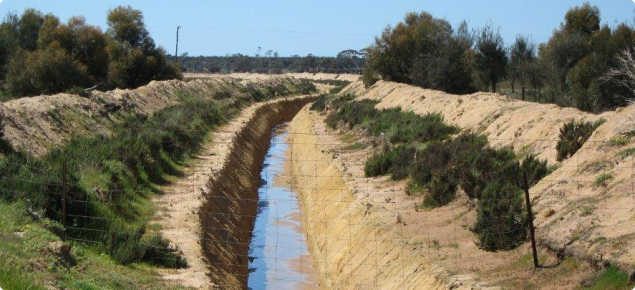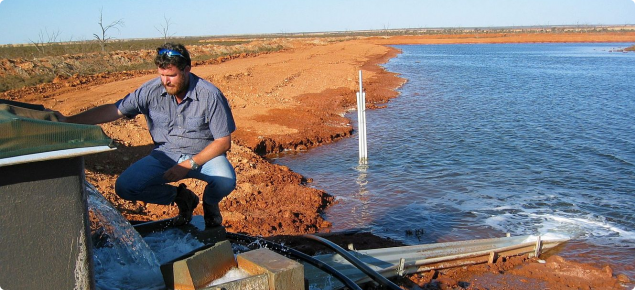The information in this page is only a guide – seek expert advice before planning, and use expert contractors for construction where necessary. Each landholder has a duty of care to make sure that flows from earthworks are not discharged indiscriminately on a neighbouring property and that stream flows are not significantly diminished or degraded.
See Conservation earthworks legal requirements of landholders for more information.
Some of these activities are covered by legislation
An owner or occupier of land must give at least 90 days notice to the Commissioner of Soil and Land Conservation of an intent to drain subsurface water to control salinity, and discharging that water onto other land, into other water or into a watercourse, even on the same property. The notice must be in writing using the notice of intent to drain or pump (NOID) form. Principles and guidelines for inland drainage are covered in the Policy framework for inland drainage.
Management options
| Option | Land slope | Soil type | Fall grade | Landscape position | Purpose |
|---|---|---|---|---|---|
| Open groundwater drain | less than 0.2% | see link page | less than 0.2% | lower landscape, valley floors | A channel used to intercept groundwater and discharge that water to a safe point. Open groundwater drains also allow inflow of surface water. Usually constructed to 1 to 3 m deep to manage salinity and waterlogging. |
| Leveed groundwater drain | less than 0.2% | see link page | less than 0.2% | lower landscape, valley floors | A channel used to intercept groundwater and discharge that water to a safe point. Leveed groundwater drains prevent inflow of surface water which reduces erosion of the drain batters. Usually constructed to 1 to 3 m deep to manage salinity and waterlogging. |
| Pumping groundwater | site specific | site specific | site specific | site specific | Used to drawdown the watertable (saline or fresh) to manage salinity and waterlogging under potentially productive land. |
| Desalination of groundwater or surface water | site specific | site specific | site specific | site specific | Used to produce product water of lower salinity level and brine discharge. May be notifiable; contact the Commissioner (see Contacts below) |
| Siphon | 1.5–2% | Upslope seepages | 1.5–2% | In or below seepages in the higher landscape | Used to safely move saline or fresh water from higher in the landscape to safe disposal points lower in the landscape. |
| Relief well / bore | lower landscape | Used to release artesian pressure in groundwater that is leading to saline discharge. | |||
| Mole drain | less than 2% | clay / heavy loam | same or less than landslope | waterlogged heavy soils | Used for removing water from saturated clay soils. These drains are practical and relativel cheap for the close spacing required on saturated clay soils. |
| Evaporation basin and pond | site specific | clay | no fall | site specific | Used to hold saline discharge and prevent salt discharge to environmentally sensitive areas. They are part of a salinity management system. |
| High water use vegetation | recharge or discharge areas, independent of slope | usually lighter textured soils | recharge or discharge areas | Not notifiable because there is no saline discharge. |



